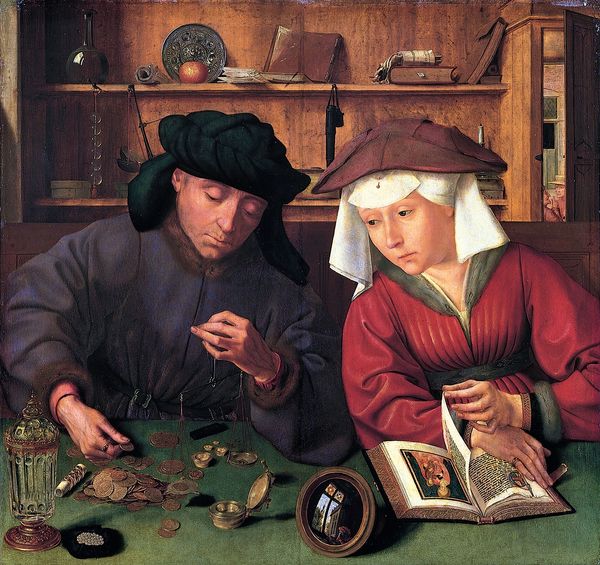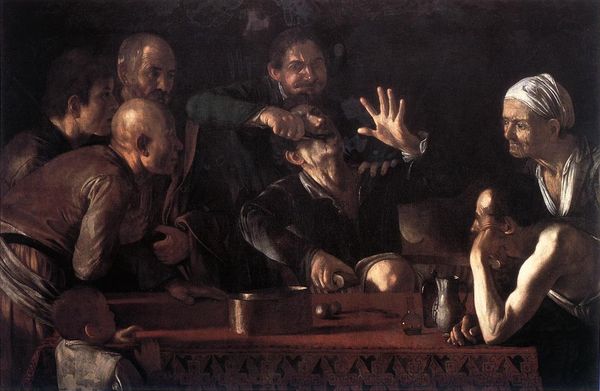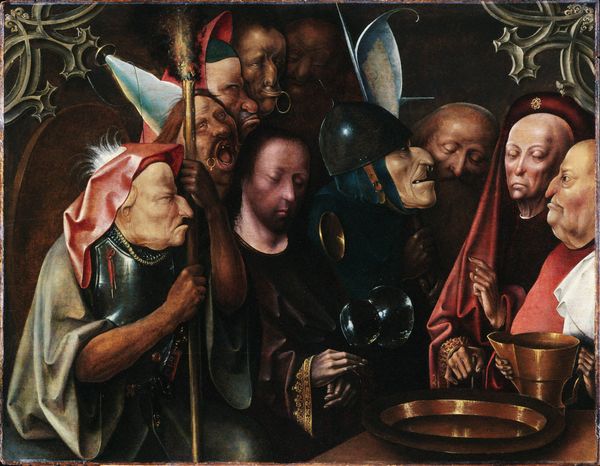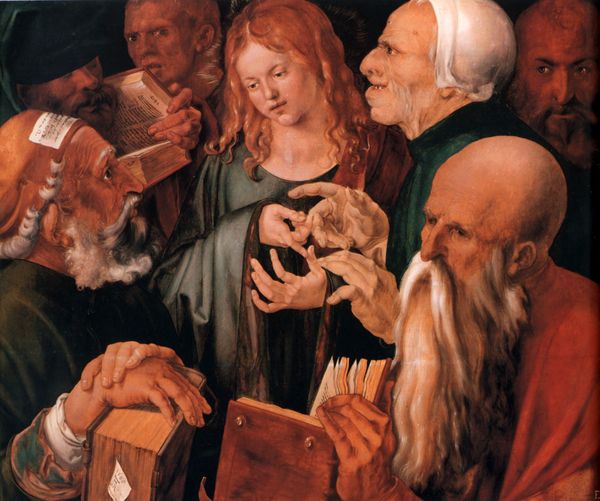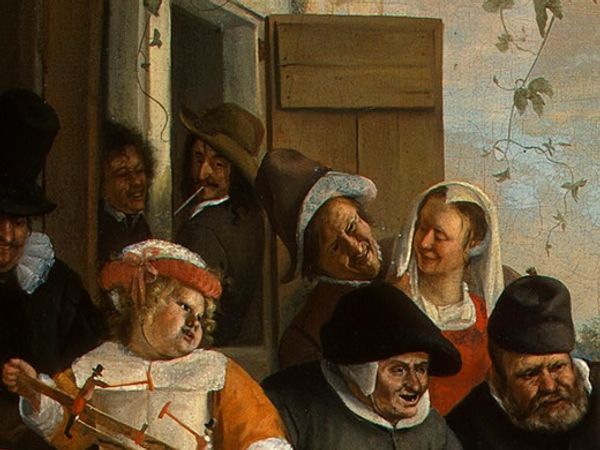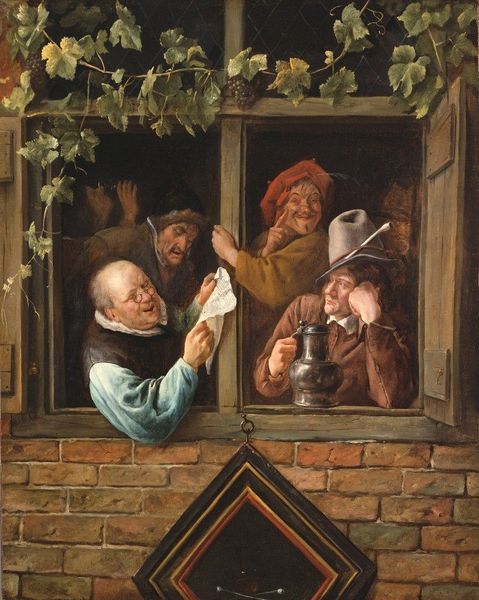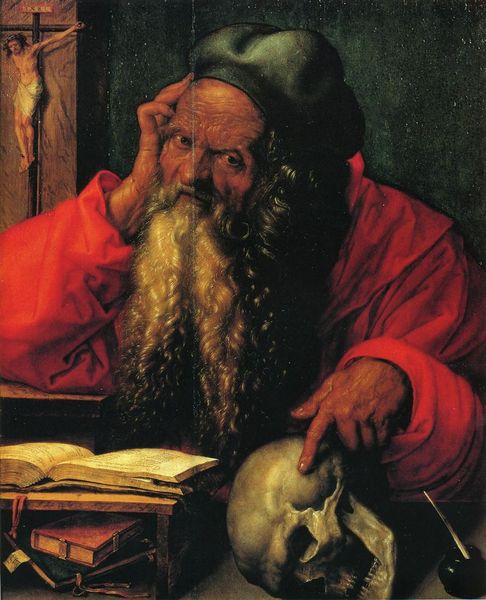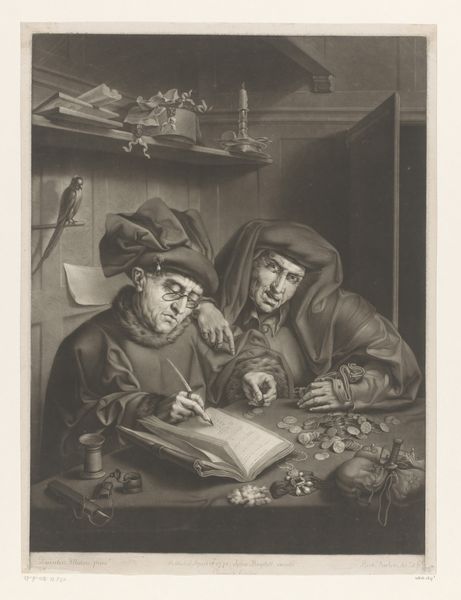
painting, oil-paint
#
portrait
#
portrait
#
painting
#
oil-paint
#
11_renaissance
#
group-portraits
#
genre-painting
#
northern-renaissance
Copyright: Public domain
Curator: Quentin Matsys’ “The Moneylenders,” created around 1520, offers a fascinating peek into the early 16th century. Editor: Whoa. Immediate reaction: a slightly unsettling air. Something about their concentrated gazes, like birds of prey eyeing a field. Curator: Indeed. It’s oil paint, so that contributes to the feeling you get here; so much texture, rendered with exquisite detail, makes them feel quite alive, or, at least, caught in amber. The intense realism of their faces almost makes them seem contemporary. What's it like seeing them across from you here in the gallery? Editor: They remind me of caricatures, but in a beautiful way, if that makes sense. I wonder how people in Matsys’ time viewed these portrayals. Curator: Well, images of bankers or money handlers from this era always have a particular charge. It’s difficult for modern audiences to imagine how thoroughly attitudes about money and profit were shaped by religious ideas. Depictions of moneylenders could quickly veer into moral judgment, or, on the other hand, celebrate burgeoning mercantile life. The public sphere of early renaissance cities and towns, for which Matsys’ paintings are meant, demanded constant renegotiations of just prices and proper business. Editor: So, a painting like this becomes a sort of public reflection, even a battleground for the soul. Is that something we’re seeing at play in "The Moneylenders?” Curator: Perhaps. There are art historians who insist Matsys is engaging with anti-Semitic tropes. Then again, these could just be depictions of local merchants from Antwerp who he’s rendering without comment. The men’s features aren’t overtly exaggerated as were often seen in medieval demonizations. Look closer at their expressions; most of these moneylenders look rather…bored? Ironic? I think Matsys' is capturing that tension, presenting them in the context of their jobs. Editor: Makes you wonder how aware Matsys was of his role, too. Artists were just beginning to move beyond "craftsmen," weren't they? To embrace individuality. Curator: Precisely! And maybe that's the heart of the matter with an artwork like "The Moneylenders". It encourages us to look at ourselves looking—acknowledging how the times change and yet don’t change at all. Editor: Like we’re still sorting out the messy intersection of morality and money. Thanks for walking us through!
Comments
No comments
Be the first to comment and join the conversation on the ultimate creative platform.



